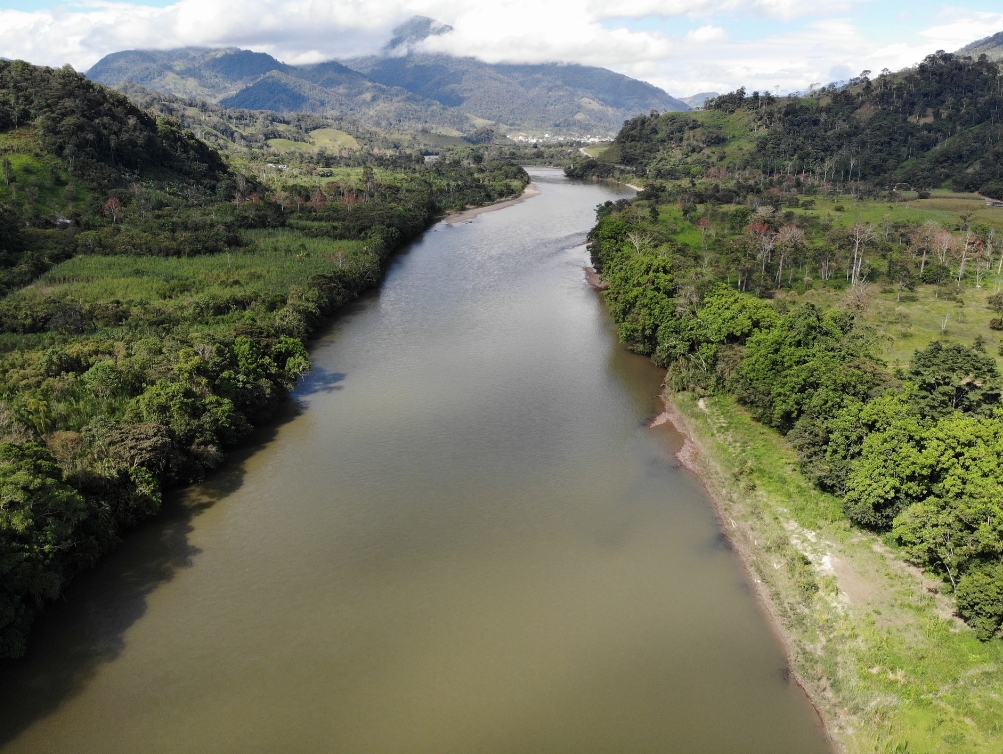Climate change investing is a growing market that both companies and individuals should be pursuing. With significant growth in the renewable energy sector, new ESG regulations, and emerging climate tech companies, now is the time to invest in the environment.
Although it may seem simple, a lot goes into climate focused investing. Here are the different types of climate change investment, why it’s important, and how EcoCart can help your company invest in a more sustainable future.
Understanding Climate Change Investment
Climate change investment refers to financing projects, businesses, and technologies that work toward reaching climate-related goals and climate change mitigation. It can also refer to the investment in your own business regarding climate-focused strategies and technology, such as switching to renewable energy or purchasing carbon credits. The ultimate goal of climate finance is to promote sustainability and help the global community achieve climate solutions while enjoying a profit.
Climate change investment and corporate responsibility
Climate change investing for businesses offers plentiful benefits. According to McKinsey, climate-related investments surpassed other types of investments in 2022, even amongst global economic difficulties. This is thanks to policies in the U.S. and E.U. supporting climate priorities, the deployment of new climate technologies, and the demand to decrease our reliance upon fossil fuels, among other reasons. Even though the primary goal of climate finance is to address the climate crisis, there are plenty of monetary benefits to reap as the climate sector continues to grow.
Corporate social responsibility in ecommerce and elsewhere is a crucial part of modern business. Investing in climate impact projects, allocating funds to your sustainability programs, and supporting other companies committed to climate tech, climate action, and renewable energy can all improve your CSR and decrease negative environmental impacts while earning a decent ROI.
Read more: Carbon offset vs carbon removal

Types Of Climate Change Investments
As with traditional investing, many different types of climate change investments exist to explore. The kind of climate finance your company wants to participate in will depend on its overall goals, risk factors, and the type of ROI it would like to receive. While some climate investments follow more traditional investing practices, such as investing in a sustainable company, other investments, like carbon credits, are unique to the climate sector.
Let’s look at some of the more common ways businesses make investments to mitigate climate change.
- Green stocks: This refers to purchasing public shares of companies contributing to the global sustainability effort. The top sectors include renewable energy—which is currently transitioning as many countries worldwide are working to reduce their reliance on fossil fuels—and climate tech—which may consist of renewable energy, carbon removal, or electric vehicles. Other important sectors include resource management and energy-efficient technologies. This is a really good breakdown of the different types of green stocks to invest in.
- Private market equity: These types of green investments support start-ups and new brands within the climate sector. Private market equity is especially important in sustainability because we need new technologies and approaches if we are to reach decarbonization targets. According to the above-linked article by McKinsey, the sub sectors that received the most private equity investments between 2019 and 2022 were power, transportation, and carbon management.
- Climate credits: Investing in climate credits (carbon credits, plastic credits, etc.) is not a traditional investment, meaning the ROI is not always monetary. Instead, funding projects to take responsibility for your company’s environmental impact can contribute to business growth by improving your company’s reputation, adding to your CSR strategies, and furthering your green certification efforts. Climate impact projects are an effective addition to any sustainability strategy as they protect ecosystems and resource management, aid underserved communities, and support initiatives that would not have happened without the funding from carbon credits. On top of this, climate impact projects are tax deductible, so even though the primary return on a carbon credit investment is the removal of carbon from the atmosphere, your company will see some monetary gain come tax season.
- ESG investing: ESG investing is simply investing in a company based on its ESG performance. Even if your company isn’t investing in other companies, this is a critical climate investment for businesses to consider. When investing in your own ESG strategies, remember that it can improve your position among investors. Top ESG investors will thoroughly analyze the ESG performance of the companies they wish to support; to gain their attention, you must develop a comprehensive ESG strategy that applies stringent targets to all levels of your company’s operations.
Investing In Climate Change Companies
Those seeking to invest in companies tackling climate change must do so wisely. Although the rise of climate businesses is clearly a good thing, not all of these companies are equal. If your company wishes to support real, positive change, it must do its due diligence to ensure that the companies it invests in are effective.
How to evaluate companies for climate change investment
To determine if a company carries meaningful impact, you must analyze all levels of its ESG performance. Luckily, you don’t have to be a climate expert to understand where a company stands. Sustainable companies will usually carry a green certification to prove their efforts and will likely already carry an ESG score to share with investors. That being said, it’s useful to understand the important performance criteria to look for.
- ESG credits: These are given to companies that demonstrate a certain level of sustainability. If a company carries ESG credits from an established entity, it is a good sign of its sustainability.
- ESG score: This is a quantified measurement of a company’s sustainability performance. While there are many entities that provide ESG scores, they should use trusted frameworks, like the GRI Standards, to be considered valid.
- Impact Projects: If a company invests in climate impact projects, ensure they are verified. Remember that there are different types of carbon credits, and they’re not all equal. Any credit given to the company should come from one of the major carbon standards and be additional and permanent.
- Green initiatives effectiveness: To analyze a company’s initiatives, consider its sustainability reports and any data surrounding its greenhouse gas emissions, water usage, energy efficiency, and other climate-related metrics. A comprehensive sustainability report will include qualitative and quantitative data to see exactly where the company stands. If its reports are lacking, it’s a good sign that the company is not as sustainable as it claims to be.
Navigating the offsets market
Emissions mitigation for business offers a fantastic contribution to any ESG strategy as companies work toward decarbonization targets. Although mitigating carbon emissions should not be used to allow companies to continue a “business as usual” approach, they can be an effective tool to take responsibility for past emissions, mitigate current emissions that cannot yet be removed from operations (but that have strategies in place to eventually remove), and demonstrate to stakeholders a commitment to sustainability.

But, the carbon offsets market, where businesses can purchase carbon credits to mitigate emissions, isn’t always easy to navigate. Here are some key things to know before you invest in a climate impact project.
- Make sure that the project has been verified. Climate impact verification uses a third party to ensure that impact projects follow the major carbon standards.
- Know the difference between carbon credits vs carbon offsets. In short, carbon offsets refer to projects designed to remove a measured tonnage of carbon from the atmosphere, and the credit is the certificate or permit representing one tonne of carbon removed.
- Make sure that the credits are certified. While carbon mitigation projects need to be verified, the resulting credits must be certified. This will ensure that the credit was properly measured, that there is no double-issuing of credits, and that the credit comes from a verified project.
If it all sounds a bit confusing, don’t worry, we’re here to help! EcoCart offers many different verified impact projects to support so that you can find one that aligns with your brand. These include wetland conservation, reforestation, infrastructure projects, and more.
Practical Steps For Companies
Investing in climate change projects is an excellent step for companies looking to grow. But where should you begin? To make a meaningful impact, you must take time to research climate impact projects, determine how much you need to invest, and develop marketing strategies to share your efforts with your stakeholders.
Here are some steps that you can take to begin this process:
- Determine your current climate contribution. What are your current greenhouse gas emissions? How much energy do you use? What impact do your suppliers have? To figure this out, you can conduct a comprehensive sustainability audit or use tools like EcoCart’s sustainability dashboard to see where you stand.
- Once you’ve measured your impact, you can determine how much of that you want to mitigate. Ideally, if your company emits 50 tonnes of carbon per year, then it will invest in impact projects to take responsibility for at least 50 tonnes of carbon emissions.
- Choose a climate impact project to support gaining carbon credits, as outlined above.
Although a three-step process seems simple, a lot goes into it. With EcoCart, you don’t have to do it alone. We offer sustainability management software so that you can calculate your footprint, resources to help you share your sustainability story, plenty of impact projects to support, and more.
Want to know where your business stands? Get your sustainability scorecard with our quiz:
Read more: Get Paid for Carbon Credits
Conclusion
Investing in the climate is both a prudent business decision and the right thing to do for our planet. Unfortunately, it’s not always as straightforward as it seems. Luckily, we’re here to help. Interested in learning more about how EcoCart can assist you in your decarbonization and climate investing goals? Reach out for a demo today.



